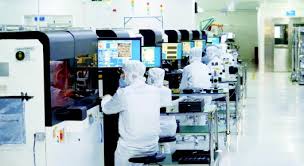Buy-side veteran Ling Peng publicly has recently questioned sell-side analysts’ forecast that Zhongji Innolight could achieve 25 billion yuan in net profit by 2027. On September 8, the stock tumbled over 9% amid the controversy, though it has still surged more than 200% year-to-date, highlighting continued market disagreement over the company’s profit outlook.
On September 5, prominent buy-side investor Ling Peng commented on market expectations that Zhongji Innolight would achieve profits exceeding 25 billion yuan in 2027, questioning the rationality of linear extrapolation behind the forecast.
In response, a brokerage analyst lashed out on social media: “Go buy your own liquor, Old Man.” Soon after, another brokerage analyst joined the debate, saying: “Publishing such articles at this point doesn’t really demonstrate much expertise; it would be more valuable and educational to post strategy essays instead.”
That came after several brokerages issued “buy” or “recommend” ratings following Zhongji Innolight’s half-year results. On September 7, Guosheng Securities said that as a global leader in optical modules, Zhongji Innolight would fully benefit from the industry’s high prosperity and considering its market share and the performance realized in the first half of the year, the brokerage revised its profit forecast, expecting 2027 net profit attributable to shareholders to reach 19.82 billion yuan.
Public Criticism
Ling Peng currently serves as Chairman and Chief Investment Officer of Wenzhou Huangyuan Investment Management Co., Ltd. Previously, Ling worked at Shenyin & Wanguo Securities, serving as Head of Strategy and Chief Strategy Analyst. From 2013 to 2015, he worked as fund manager at Soochow Fund. From 2015 to 2016, he served as Deputy General Manager of the Research Department and Dedicated Investment Manager at Industrial Global Fund.
According to data from the Private Fund Ranking Network, as of September 2025, all four products under Wenzhou Huangyuan Investment Management with disclosed performance have delivered positive returns, with the earliest product, Huangyuan Expansion No.1, achieving a cumulative return of 92.6% since inception.
On September 5, Ling commented on the market’s 2027 profit forecast for Zhongji Innolight exceeding 25 billion yuan, questioning how a component manufacturing company could achieve such high annual profits.
Ling noted that the forecast is based on two assumptions: first, the capacity has already been deployed, so supply will be available by 2027, which is largely confirmed; second, the company stated it would not lower prices, so this supply would translate into revenue. Assuming current profit margins (around 30% net margin now), the net profit will be 25 billion yuan.
Ling found this method of “linear extrapolation” absurd. “The internet sector in 2000 was disruptive not just because of technology, but because the business model was new. The semiconductor industry, however, has been developing for over 70 years. Even with current capacity shortages, how can one ensure prices will not drop once production comes online in a few years?”
Sell-Side Recommendations
Notably, after Zhongji Innolight disclosed its 2025 half-year report, multiple brokerages issued “buy” or “recommend” ratings.
On August 26, Zhongji Innolight reported that it achieved revenue of 14.789 billion yuan in the first half of 2025, up 36.95% year-on-year; net profit attributable to shareholders was 3.995 billion yuan, up 69.4%; net cash from operating activities was 3.218 billion yuan, up 232.45% year-on-year.
According to data compiled by Wind Information, 17 brokerages have issued reports on Zhongji Innolight after the earnings results. Guosheng Securities, Changjiang Securities, Shanghai Securities, Soochow Securities, Western Securities, and Great Wall Securities among others issued “buy” ratings, Industrial Securities, Morgan Stanley, and four other brokerages issued “overweight” ratings, while several issued “recommend” ratings.
Most reports have raised their future net profit forecasts, with some predicting that net profit attributable to shareholders could exceed 20 billion yuan by 2027.
Kaiyuan Securities gave Zhongji Innolight a “buy” rating, projecting revenue of 41.124 billion, 75.269 billion, and 99.833 billion yuan from 2025 to 2027, and net profit attributable to shareholders of 9.046 billion, 16.004 billion, and 20.834 billion yuan.
The report notes that thanks to the rapid increase in high-end products like 800G modules and continued cost reduction, Zhongji Innolight’s revenue, gross margin, and net profit are further enhanced, and in addition, its key clients are increasing capital expenditures, boosting investment in computing infrastructure.
Demand for high-end optical modules such as 800G is growing significantly, accelerating the technology iteration to 1.6T and above, and the company’s future growth potential is broad, it noted.
Capital Concentration
Optical modules are core components in optical communication systems, essentially converting optical signals into electrical signals and vice versa. They serve as a critical bridge connecting electronic devices (such as switches and servers) with optical transmission media (such as optical fibers), widely used in data centers, telecom networks, and 5G base stations.
Since April this year, after a temporary bottoming, the A-share market began an upward trend. The AI-computing-driven optical module sector led the market, with the CPO (optical module) index rising 179.74% from its low on April 9, becoming the strongest sector of the year.
However, recently, CPO-related stocks have experienced significant volatility. On September 8, the CPO sector continued to decline sharply, with market caps exceeding 100 billion yuan, Zhongji Innolight and Eoptolink Technology slumping over 9%.
Regarding recent fluctuations in the optical module sector, HuaBao Fund manager Cao Xuchen said that the sector has become a focus of capital concentration, and with previous gains already realized, if incremental funds are insufficient to drive further price increases, short-term sell-offs may occur, resulting in significant declines.
Some private fund managers also believe that certain sell-side analysts’ forecasts are overly optimistic, and market rules dictate that during overheated periods, caution is warranted; cycles “never move in straight lines but always follow curves.”

